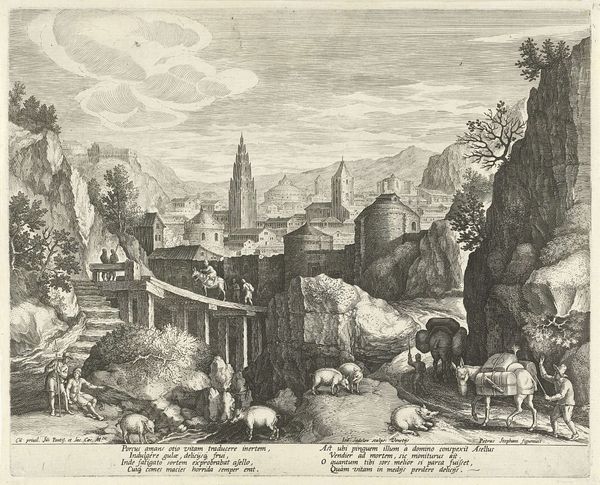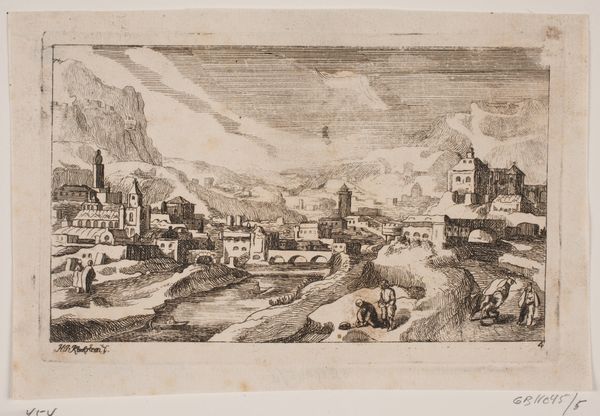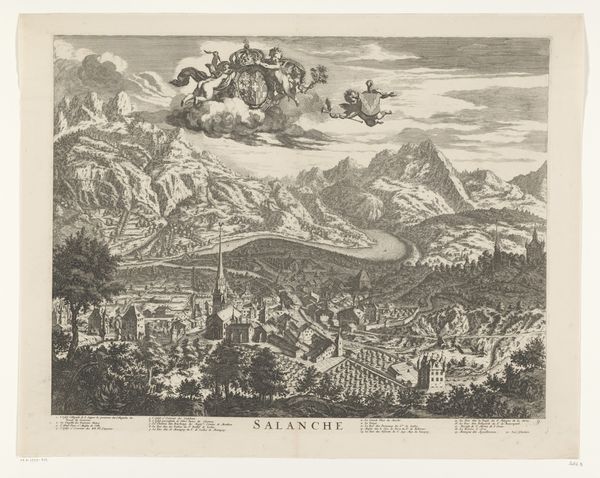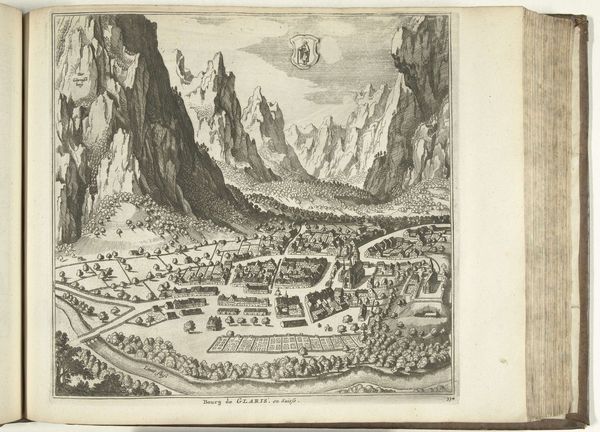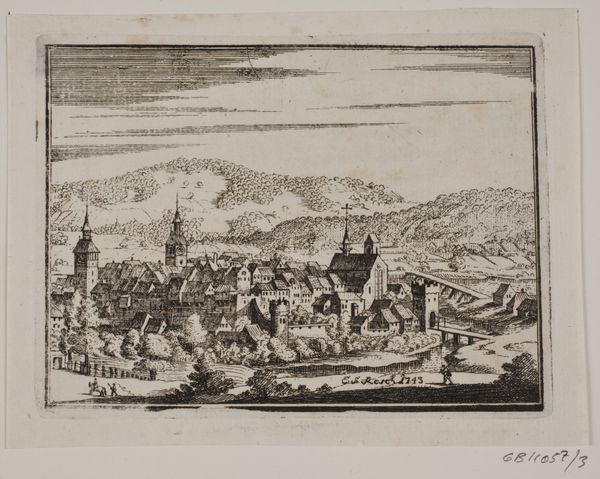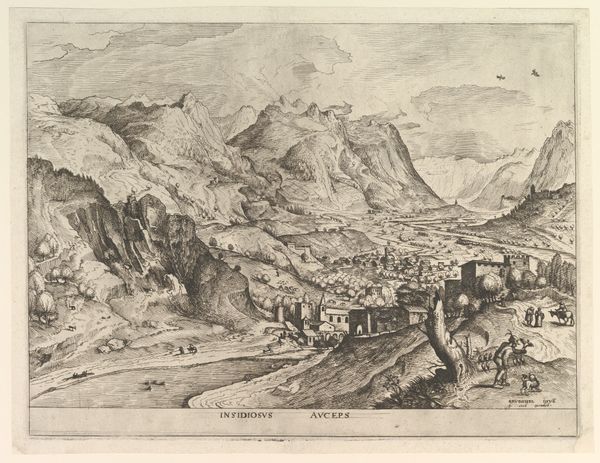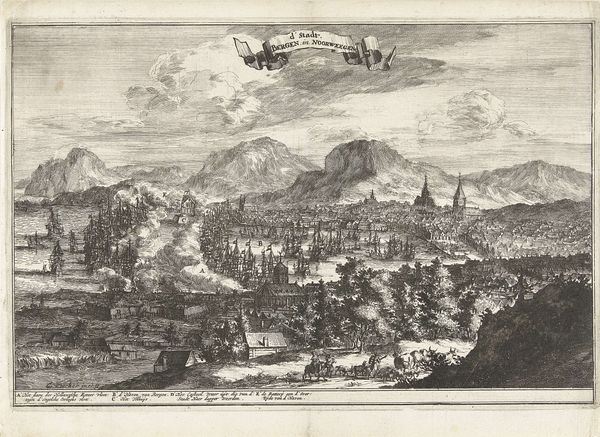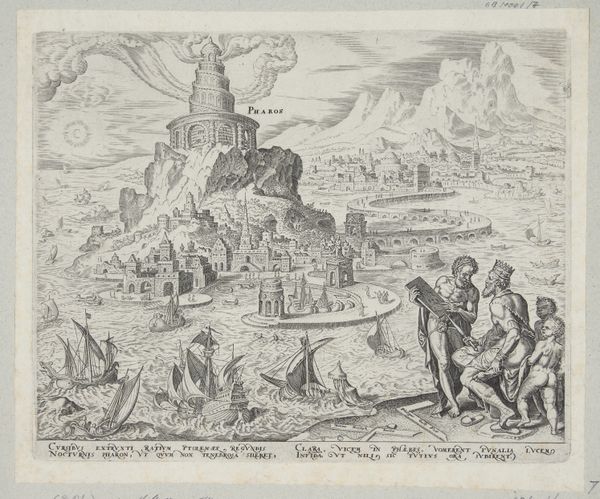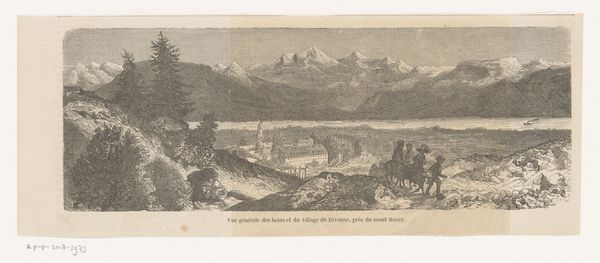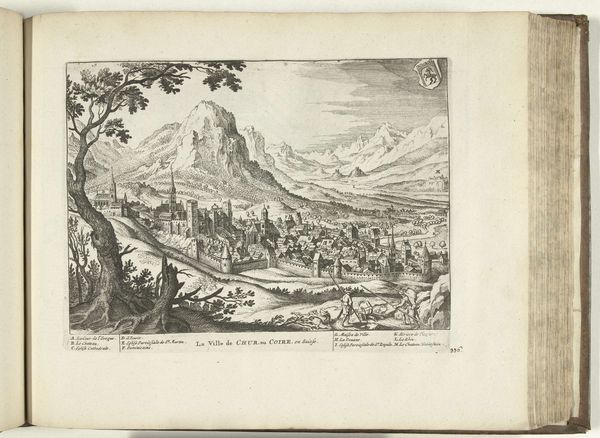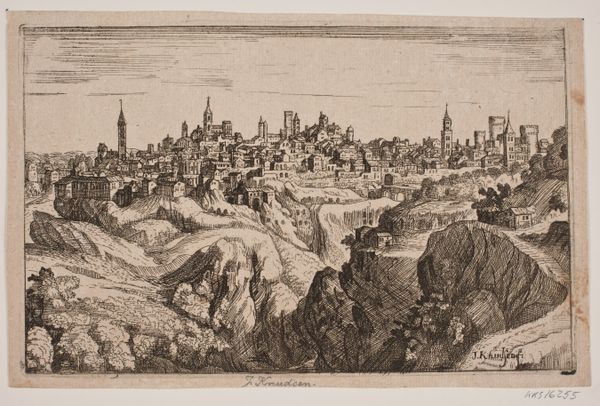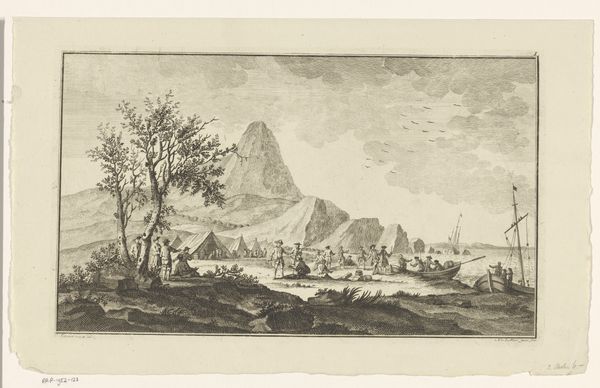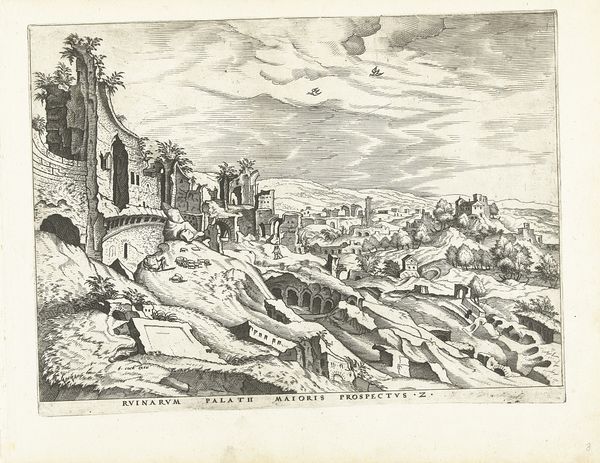
print, etching, engraving
#
narrative-art
# print
#
etching
#
old engraving style
#
landscape
#
perspective
#
mannerism
#
figuration
#
form
#
rock
#
ink drawing experimentation
#
pen-ink sketch
#
line
#
cityscape
#
history-painting
#
academic-art
#
engraving
Dimensions: height 216 mm, width 269 mm
Copyright: Rijks Museum: Open Domain
Editor: This is "Landscape with the emblem about the washing of a Moor" a print, an etching and engraving created sometime between 1595 and 1600 by Johannes Sadeler II. The scene is striking - this fantastical architectural dreamscape looms above some kind of symbolic drama playing out in the foreground. What's your interpretation? Curator: You're right, it's like two worlds colliding. The idealized landscape, drawn with such precision and almost unsettling perspective, definitely sets a stage for the emblem's message. Mannerism, after all, thrived on this tension, didn't it? The bizarre perspective, the slightly elongated figures - it's all designed to unsettle and provoke thought. What strikes *me* is the active tension of this image between ideal beauty, and something else: an uneasy exploration of perhaps something more morally ambivalent. How does the text beneath, the Latin verse, play into this, do you think? Editor: I'm not sure. Something about futility perhaps? I'm not sure, maybe an act of cleansing is being commented on, juxtaposed with that impressive vista, or what looks like almost utopian architecture behind? Curator: Exactly! So it asks *us* to grapple with how external appearances reflect internal realities. Could it be a reflection of society's obsession with superficial changes? Sadeler leaves it wonderfully open. Editor: I never considered the thematic possibilities in a landscape that way! Curator: These Mannerist artists… They love these enigmas. A landscape isn't *just* pretty scenery; it can reflect hidden thoughts, struggles, the questions that haunt us. Editor: Thanks! I’m going to be thinking about what’s "hidden in plain sight" a lot more now.
Comments
No comments
Be the first to comment and join the conversation on the ultimate creative platform.
